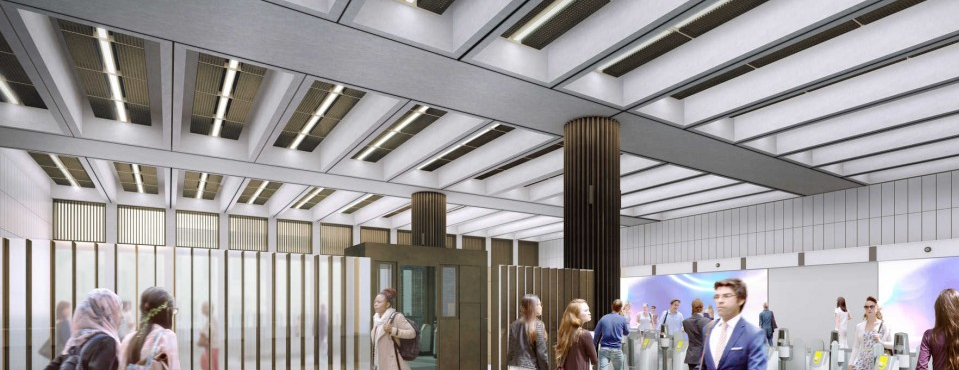Le Crossrail sera un élément majeur du système de transports londonien probablement pour le prochain siècle et plus (la ligne traversera la ville d’Est en Ouest, en souterrain, en connectant des tronçons existants des deux côtés et en offrant un accès direct au centre depuis notamment l’aéroport de Heathrow, Canary Wharf, Reading et les banlieues de 2e et 3e couronne, via 10 nouvelles stations au centre; infos ici).
Justement, des images de synthèse des nouvelles stations ont été publiées récemment, et la première impression est vraiment celle d’un design efficace, “hydraulique”, dimensionné et aménagé pour évacuer des flux.
La fonctionnalité et l’efficacité sont clairement des aspects centraux pour une telle infrastructure, pour le très long terme. Actuellement à Londres, l’offre court après la demande, avec des cas d’insuffisance relativement choquants. Bien sûr, résoudre ces problèmes est une condition sine qua non pour éviter le collapse, pouvoir recevoir les nouveaux habitants et envisager transférer une partie des flux automobiles vers les transports publics.
Ceci étant dit, une question me reste: est-ce que les projets qui se projettent dans le très long terme, comme le Crossrail, ne devraient pas aussi être visionnaire en termes de plaisir lié à l’utilisation des transports publics? Oui, parler de cette notion représente un saut qualitatif énorme par rapport à l’actuel, à tel point qu’il semble presque incongru de l’amener. Mais si les transports publics doivent être choisis, au détriment d’une voiture forcément confortable, elle doit faire partie de l’équation (la volonté de Londres de transférer les flux vers les transports publics est assez timide, mais cela n’enlève rien à la pertinence de l’idée d’une ville dont le fonctionnement repose sur des offres publiques capacitaires et confortables et pas sur la voiture). Et de manière plus large: que fait la ville pour les citoyens qui ne veulent pas ou ne peuvent pas avoir ce choix? Est-ce qu’ils sont condamnés à être “évacués” comme des particules de flux ou est-ce que leur bien-être sera considéré pleinement dans la notion de “niveau de confort approprié”*?
* voir par exemple: Improving Access to Public Transport, ECMT, et Measuring and Valuing Convenience and Service Quality, International Transport Forum.
This post is also available in: French

